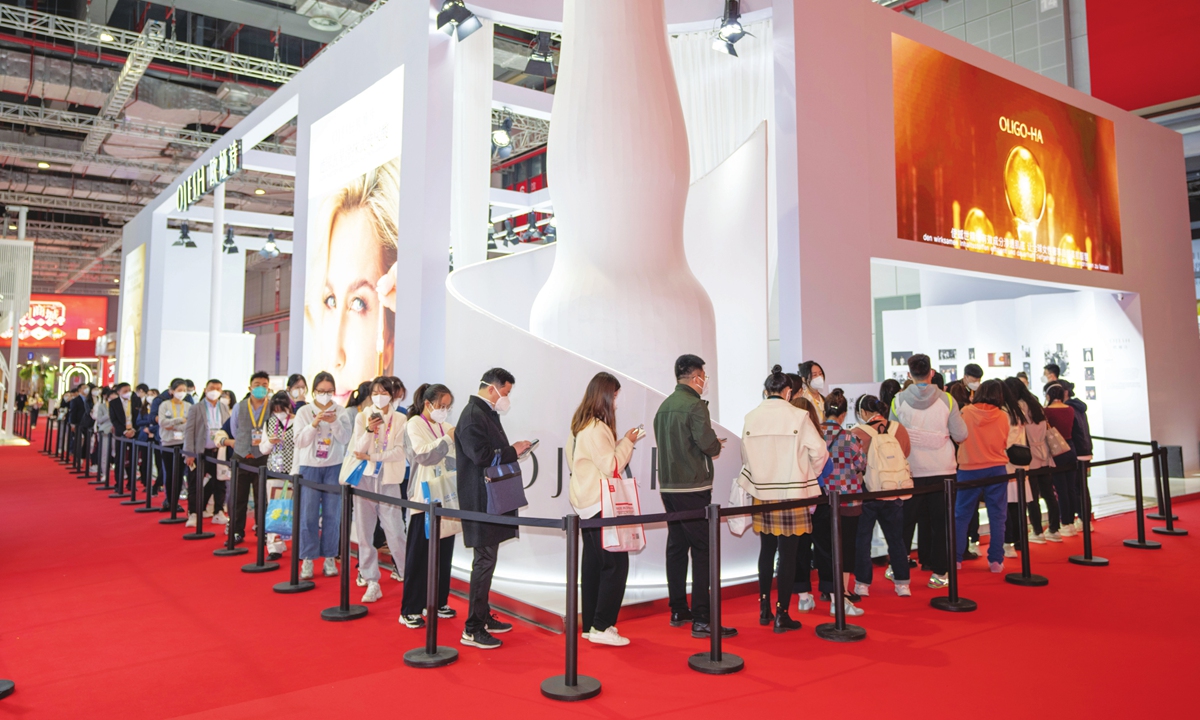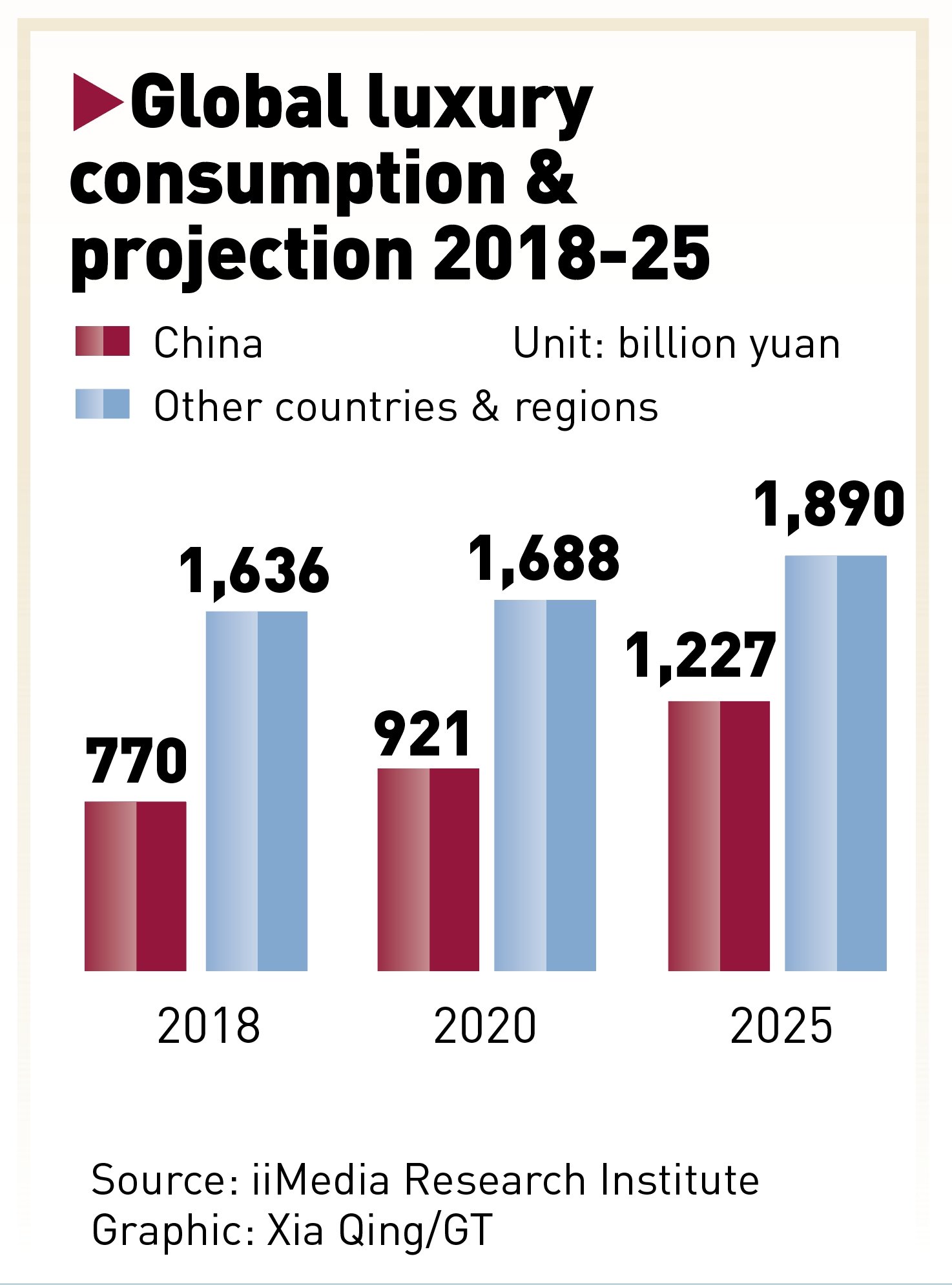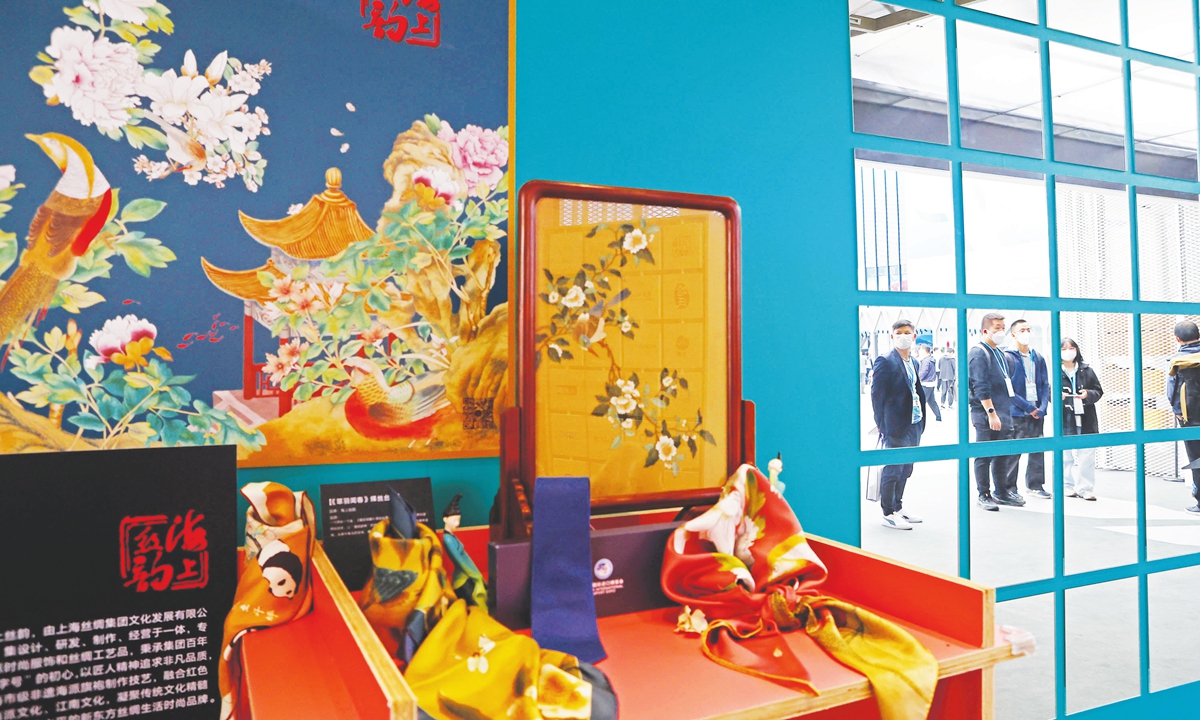
People queue at the CIIE. Photo: VCG
The four-leaf clover-shaped National Exhibition and Convention Center once again is welcoming visitors from around the world during the ongoing fifth China International Import Expo (CIIE) in Shanghai. Visitors are attracted by the wide range of imported goods. There are also international luxury brands, all of which are trying their best to innovate from design concepts to product materials to engage with younger consumers.
A report by consulting firm Bain & Company said that in 2021, China's luxury market maintained double-digit growth from 2020, putting the country on pace to become the world's largest luxury market by 2025.
Confidence in Chinese market
At the expo venue, Global Times reporters witnessed international luxury brands exhibiting dazzling products, with several exhibitors expressing their confidence in the Chinese market.
The Chinese market is really very important in the global luxury industry, as Chinese consumers contribute one third of the global luxury market, Cai Jinqing, President of Kering Greater China told the Global Times.
"We are very confident in the Chinese market, as our scale is already very large, on this basis, we are also constantly deepening more interaction with consumers in the market such as holding art exhibitions and building pop-up stores," Cai said.
"China's high-end consumer market is bound to become more mature and more tailored to individual demands," Chen Gang, chief representative of Italy Ferretti Group Shanghai Representative Office told the Global Times on Sunday. The company has participated in the CIIE for five years in a row, and it also attended the consumer products expo in South China's Hainan this year. "This is our confidence in the Chinese market," Chen said.

Graphic: Xia Qing/GT
According to the Bain & Company's report, luxury sales in China are increasingly benefitted by duty-free shopping in Hainan amid the country's efforts to turn Hainan into an international tourism island, constructing the Hainan Free Trade Port and pursuing high-level opening-up.
In 2021, luxurious sales in Hainan increased about 85 percent, reaching 60 billion yuan, the report said.
China's total retail sales of consumer goods rose by 3.5 percent year-on-year in the third quarter, making a sharp rebound from the 4.6 percent drop in the second quarter, as upgrading of consumption proceeds, data from the National Bureau of Statistics showed.
Attracting young consumersMany brands have started to make efforts to lure younger consumers, and build more connections with young people through various kinds of projects including engaging with college students.
Young consumers in the Chinese mainland are emerging as a quiet force in the luxury market. According to a study jointly released by Tencent Marketing Research (TMI) and Boston Consulting Group (BCG) in January this year, about 46 percent of sales in the luxury goods market in the Chinese mainland in 2021 are made by consumers born after the 1990s.
Young consumers tend to buy luxury goods as a way to express themselves or reward themselves. They are also interested in innovative shopping experiences, such as interactive online shopping or brand pop-up stores, the report said.

Exhibits at the CIIE Photo: VCG
As more young consumers start to pay attention to the luxury industry, it will actually bring a lot of changes to brands, for instance, brands will focus on creating more creative fashionable products with a younger design philosophy, Cai from Kering said.
Young consumers have their own focus, for example, they are very active in the digital world, and their curiosity is leading and even affecting the entire industry, which pushes forward the industry to make an effort "in a more innovative and forward-looking manner," Cai noted.
It is particularly noteworthy that the digitalization of the luxury industry is accelerating due to the unique and rapid changes in China's e-commerce environment. The younger generation is interacting with brands through more channels, driving them to embrace new technologies, especially mobile platforms.
The growing middle class in China and in particular people in their 20s, are a huge incremental market for foreign luxury brands, Zhang Yi, CEO of iiMedia Research Institute, told the Global Times on Sunday.
To attract young buyers, the luxury brands need to enhance the acceptance of the brand among young people as their clients used to be older generations while strengthen marketing through digital channels which is a distinctive feature that separates Chinese and overseas markets, Zhang said.






